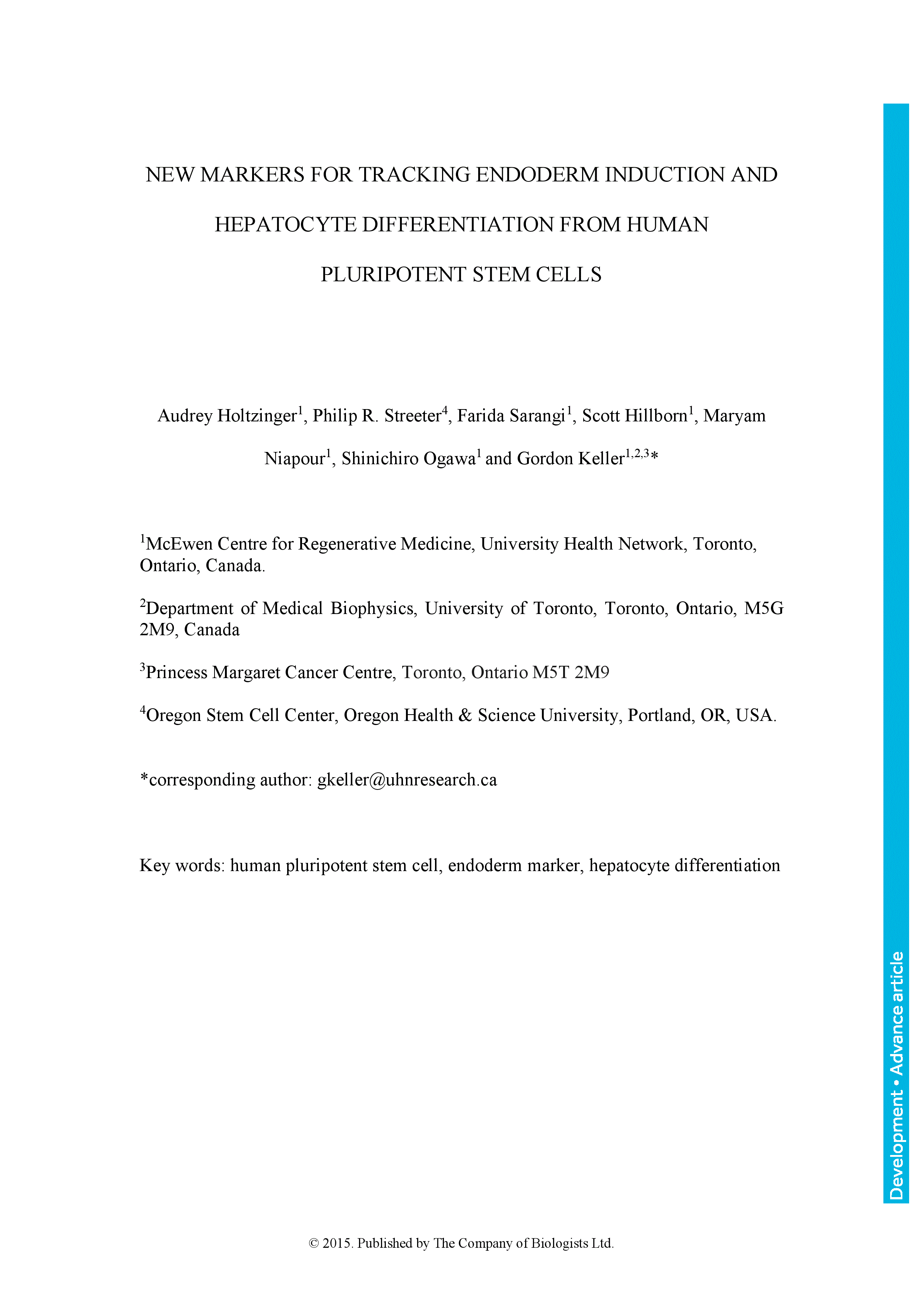The efficient generation of hepatocytes from human pluripotent stem cells (hPSCs) requires the induction of a proper endoderm population, broadly characterized by the expression of the cell surface marker CXCR4. Strategies to identify and isolate endoderm subpopulations predisposed to the liver fate do not exist. In this study, we generated mouse monoclonal antibodies against hESC-derived definitive endoderm with the goal of identifying cell surface markers that can be used to track the development of this germ layer and its specification to a hepatic fate. Through this approach, we identified two endoderm-specific antibodies, HDE1 and HDE2 that stain different stages of endoderm development and distinct derivative cell types. HDE1 marks a definitive endoderm population with high hepatic potential whereas staining of HDE2 tracks with developing hepatocyte progenitors and hepatocytes. When used in combination, the staining patterns of these antibodies enable one to optimize endoderm induction and hepatic specification from any hPSC line.
New markers for tracking endoderm induction and hepatocyte differentiation from human pluripotent stem cells
Currently Viewing Accepted Manuscript - Newer Version Available
Audrey Holtzinger, Philip R. Streeter, Farida Sarangi, Scott Hillborn, Maryam Niapour, Shinichiro Ogawa, Gordon Keller; New markers for tracking endoderm induction and hepatocyte differentiation from human pluripotent stem cells. Development 2015; dev.121020. doi: https://doi.org/10.1242/dev.121020
Download citation file:
Advertisement
Call for papers: Uncovering Developmental Diversity

Development invites you to submit your latest research to our upcoming special issue: Uncovering Developmental Diversity. This issue will be coordinated by our academic Editor Cassandra Extavour (Harvard University, USA) alongside two Guest Editors: Liam Dolan (Gregor Mendel Institute of Molecular Plant Biology, Austria) and Karen Sears (University of California Los Angeles, USA).
Choose Development in 2024

In this Editorial, Development Editor-in-Chief James Briscoe and Executive Editor Katherine Brown explain how you support your community by publishing in Development and how the journal champions serious science, community connections and progressive publishing.
Journal Meeting: From Stem Cells to Human Development

Register now for the 2024 Development Journal Meeting From Stem Cells to Human Development. Early-bird registration deadline: 3 May. Abstract submission deadline: 21 June.
Pluripotency of a founding field: rebranding developmental biology

This collaborative Perspective, the result of a workshop held in 2023, proposes a set of community actions to increase the visibility of the developmental biology field. The authors make recommendations for new funding streams, frameworks for collaborations and mechanisms by which members of the community can promote themselves and their research.
Read & Publish Open Access publishing: what authors say

We have had great feedback from authors who have benefitted from our Read & Publish agreement with their institution and have been able to publish Open Access with us without paying an APC. Read what they had to say.



